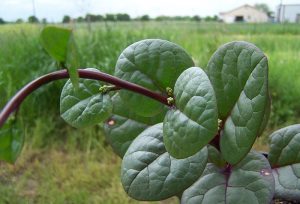by Christine Reid
When in doubt, go native! At least as far as your landscape is concerned, that is. Unfortunately, some people are convinced that putting in native plants and trees means giving up having a colorful, interesting yard. They may think that a lot of natives tend to be dull, mousy things that you put in your garden for noble reasons, not aesthetic ones. Well, they think wrong! You can do something good for the environment and get a beautiful, relaxing garden as well. It can also save you time and money.
There are varying definitions of ‘native plants’ out there, but for this purpose, they’re plants and trees that have grown well on their own in this area for a long time without human intervention, provide value to wildlife and aren’t considered invasive. Natives are survivors: past, present and future.
Birds, butterflies and other wildlife are naturally drawn to native plantings. Many pollinators, such as bees, prefer natives, as they contain the nutrition that some hybrid plants lack. Native butterfly weed (Asclepias tuberosa), the host plant for the monarch and queen butterflies, makes a charming addition to the garden with its vivid orange blooms. It also attracts oleander aphids which then draw in beneficial insects such as ladybugs. The heartleaf hibiscus, with its vibrant red blooms, and fragrant blackfoot daisy are also popular with pollinators and do well in a rock garden.
There are some great native trees that provide beauty, food and shade. The Texas persimmon tree may not produce large fruit, but the trees have an elegant look and the sweet black persimmon is delicious to both wildlife and people. The native pecan trees don’t yield large nuts like the paper shell pecans, but some feel the taste is superior. The native pecan trees are also thought sturdier and more drought tolerant than the improved varieties. They give lots of shade, too!
In addition to food, native plants can provide shelter. On windy days, many butterflies find safe harbor in native grasses like silvery plumed Lindheimer muhly, pink bloomed gulf muhly or switch grass, which turns golden in the fall. People benefit from native gardens too, as there’s something very enjoyable about a pretty yard filled with butterflies flitting from flower to flower, velvety bumblebees industriously going after pollen and birds swooping from tree to tree.
Because native plants, shrubs and trees are adapted to the local environment, they require less water after being established, such as kidneywood, Chinquapin oak, Burr oak, cedar elm and Texas sage, to mention just a few. ‘Dry shade’ plants like Turk’s cap, flame acanthus and cedar sage usually do just fine without any help, or water, from people. They also don’t need synthetic pesticides and fertilizers. By avoiding the use of chemicals, homeowners can do their part to keep the underground water supply clean. Keeping things organic in the yard means birds, frogs, butterflies and other wildlife will thrive and help control garden pests.
When allowed to look natural, native grasses need little, if any, mowing. A clump of an ornamental grass like inland sea oats with its gently swaying ivory seedheads in the summer and fall doesn’t need much care at all, once established. The previously mentioned muhly grasses make very nice natural plantings as well as buffalo grass, a native turfgrass. And a soft-looking but tenacious ground cover, silver ponyfoot, only gets about 4 inches high and forms a silvery mat that takes care of itself. Clearly, the less often a gasoline-powered piece of equipment is used, the better the air quality is for all of us. Plus, consider how pleasant it would be to hear less roaring of mowers, edgers and leaf blowers and more chattering of birds and buzzing of bees.
The next time you have a spot to fill in the garden, consider putting in a native tree, shrub or plant. Do it for the environment, wildlife and you. Going native has never been so easy or looked so good!
Any questions? Send an email to reidsnursery@gmail.com or call us at (512) 398-6011. Enjoy your garden!
Resources for native plant information
Lady Bird Johnson Wildflower Center
“Native Texas Plants” by Sally and Andy Wasowski
“Remarkable Plants of Texas” by Matt Turner
Suggested varieties for native planting
Trees
Anacacho Orchid
Bald Cypress
Burr Oak
Cedar Elm
Chinqaupin Oak
Desert Willow
Goldenball Lead Tree
Pecan (native)
Retama
Roughleaf Dogwood
Texas Persimmon
Texas Redbud
Perennials
Blackfoot Daisy
Butterfly Weed
Brazos Penstemon
Cedar Sage
Coneflower
Damianita
Fall Obedient Plant
Four-Nerve Daisy
Heartleaf Hibiscus
Red Columbine
Salvia greggii
Grasses
Blue stem
Buffalo grass
Gulf Muhly
Inland Seaoats
Lindheimer Muhly
Silver Pony Foot
Switch grass
Vines
Alamo vine
Carolina Jessamine
Coral Honeysuckle
Crossvine
Passion vine
Shrubs
Flame Acanthus
Kidneywood
Possumhaw
Texas Sage
Turk’s Cap
White Mistflower
Yaupon Holly






